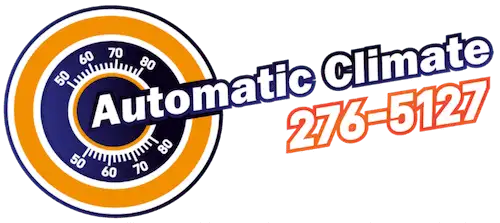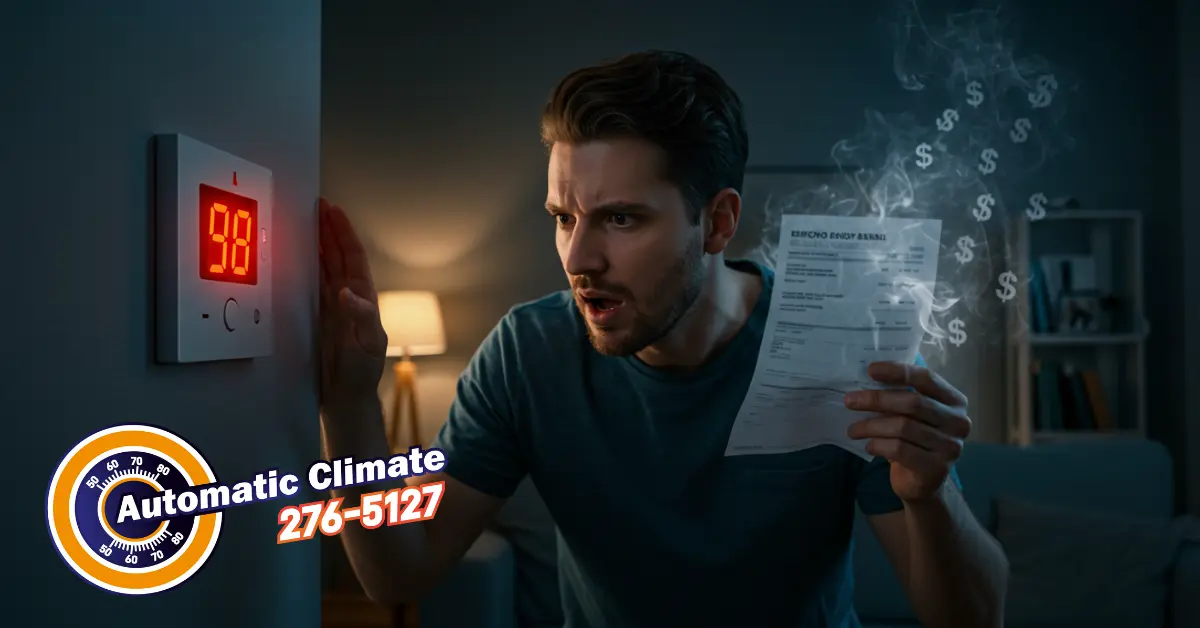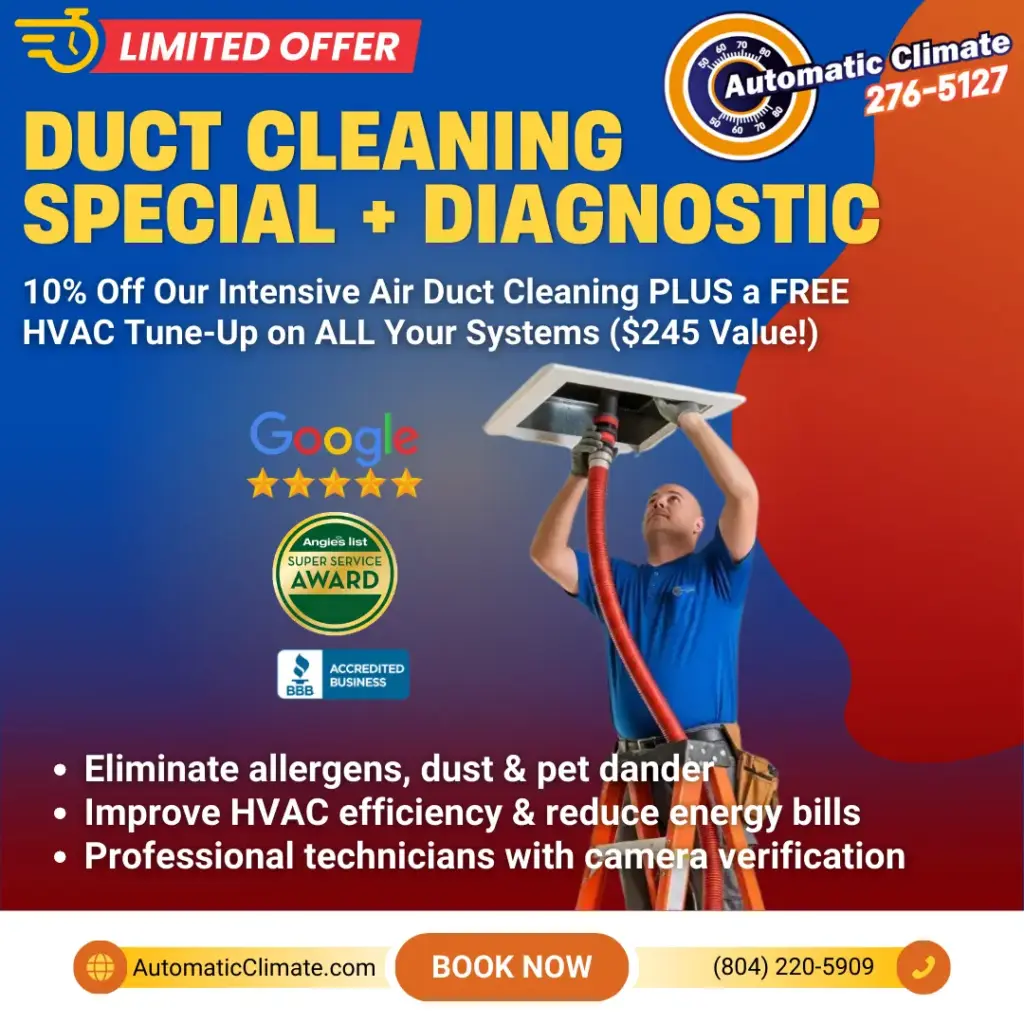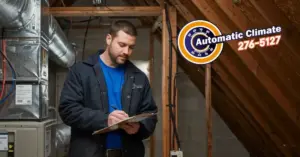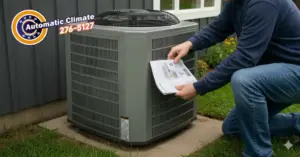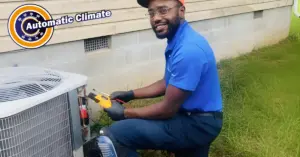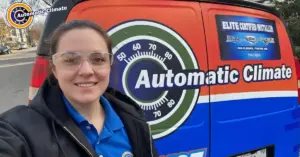How do I know if my air ducts are properly sealed after repair?
Why Proper Duct Sealing Matters After Repairs
Energy Efficiency and Cost Savings
Enhanced Home Comfort
Improved Indoor Air Quality
Our Trusted Partners
EXCELLENTTrustindex verifies that the original source of the review is Google. Aaron J. Visited our home later this evening to follow up with today’s install and the system checked out as it should. The only issue we had was connecting and setting up the wireless thermostat due to the app issues. He was very professional and patient. John and Joe replaced our 2nd floor gas heating system in a professional manner. Everything went smooth according to them and they finished the job in less time than expected. Aaron was professional and extremely thorough during his visit to our home. He took the time to explain the workings of our HVAC system and answered every question. To add to the above, I called the office and spoke with both Austin and Jason who were also very helpful while explaining the warranty and transfer of same. We are extremely pleased with Automatic Climate and will highly recommend to anyone who may ask for recommendations.
Owner's reply
Thank you for sharing your positive experience! We're thrilled Aaron, Austin, and Jason could assist you so thoroughly. Your recommendation means a lot, and we're glad we could help with your HVAC system and warranty details.Posted onTrustindex verifies that the original source of the review is Google. I had a very positive experience with them. They had better financing options, better prices, and were more responsive than other companies I got quotes from. Michael Chris and the whole team were fantastic. Highly recommendPosted onTrustindex verifies that the original source of the review is Google. Technician was on time, personable and professional. He throughly explained everything that he was going to do and identified any concerns. Very pleased with the overall experience and would recommend to other homeownersPosted onTrustindex verifies that the original source of the review is Google. I had the coils cleaned in my tankless water heater. Aaron Jernigan was so seemingly competent, so well-mannered, so good explaining what was going on, I am considering switching to Automatic Climate, I will definitely have all the vents in my house blown out in the near future.Posted onTrustindex verifies that the original source of the review is Google. Fast, friendly, knowledgeable and professional. Their associate, Casey J, helped fix our heat when we were enduring 20-30 degree nights. Thank you so much!!Posted onTrustindex verifies that the original source of the review is Google. Charlie was very dedicated. Provided excellent service. Very impressed with his dedication. Did check on HVAC and cleaned drier vent in Condo we purchased last summer.Posted onTrustindex verifies that the original source of the review is Google. I've been a customer of Automatic Climate for several years. I value the services of this firm. My commitment to renewing my maintenance contract year after year is directly related to the technical expertise of one of the company’s many representatives, Antonio Diaz. Antonio has kept all three of my units running smoothly for years, and when necessary forewarns me early of any pending issues. He offers solutions right away without long waits for follow up. I've never had to call the company back to correct any of his work. Antonio attributes his success and extraordinary customer service to the culture of Automatic Climate. I would recommend Antonio and Automatic Climate to any of my friends and neighbors. They're a company you can trust.
Owner's reply
Thank you so much for your kind words! We're thrilled to hear you had a positive experience with our service.Posted onTrustindex verifies that the original source of the review is Google. John & Nick were here today to clean our air ducts. They were very thorough and made sure that they left our home as clean as when they arrived. They explained the process clearly and worked efficiently. Great job!Verified by TrustindexTrustindex verified badge is the Universal Symbol of Trust. Only the greatest companies can get the verified badge who has a review score above 4.5, based on customer reviews over the past 12 months. Read more
Extended HVAC System Lifespan
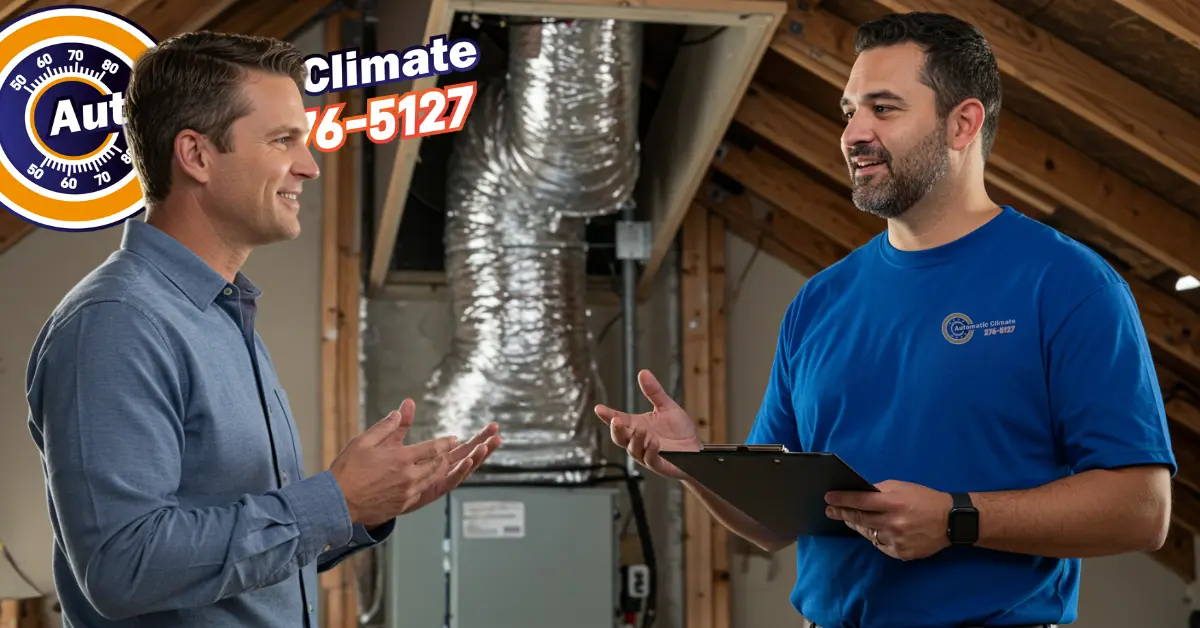
Telltale Signs Your Duct Sealing Might Be Compromised
1. Uneven Temperatures Between Rooms
2. High Energy Bills
3. Excessive Dust
4. Visible Duct Damage or Disconnections
5. Strange Noises
6. Poor Airflow from Vents
SKip The Line! Schedule Your HVAC Service by Booking Online Now.
Get in Touch
Contact Us
Signs Your Duct Sealing Might Need Attention
DIY Checks vs. Professional Duct Sealing Verification
Simple DIY Inspections
The Limitations of DIY Checks
While these DIY steps can identify major, obvious problems, they have significant limitations:
- Inaccessibility: Much of your ductwork is hidden within walls, floors, and ceilings, making visual inspection impossible without demolition. Significant leaks often occur in these hidden areas.
- Small Leaks Add Up: DIY methods are poor at detecting numerous small leaks, which collectively can account for substantial energy loss. Proper duct sealing addresses these comprehensively.
- Quantification Issues: DIY checks can’t measure the *total* leakage rate. You might find *a* leak, but you won’t know if the overall system meets acceptable standards for duct sealing.
- Safety Concerns: Navigating attics and crawl spaces can be hazardous. Working near HVAC equipment also carries risks if you’re unfamiliar with it.
When to Call the Professionals
Professional Methods for Confirming Duct Sealing Integrity
Duct Leakage Tester (Duct Blaster® Test)
This is the industry standard for quantifying duct leakage. The process generally involves:
- Temporarily sealing all supply registers and return grilles throughout the house.
- Connecting a calibrated fan (the “Duct Blaster”) to the duct system, usually at the air handler or a large return opening.
- Pressurizing (or depressurizing) the entire duct system to a standard pressure, typically 25 Pascals (Pa). This pressure difference simulates the operational pressure within the ducts.
- Measuring the amount of airflow (in cubic feet per minute, CFM) required by the fan to maintain that standard pressure. This airflow measurement represents the total leakage rate of the duct system (often referred to as CFM25).
The results of this HVAC duct testing provide a precise measure of how airtight your ducts are. Technicians compare this CFM25 number against industry standards or local building codes to determine if the duct sealing is adequate. A test performed after air duct repair can confirm its effectiveness. Quality duct sealing results in a low CFM25 reading.
Smoke or Fog Testing (Pressurized)
Thermal Imaging
Maintaining Ductwork Integrity: Post-Sealing Tips
What Constitutes “Properly Sealed”? Understanding the Standards
Beyond the numbers, proper duct sealing also involves using the right materials and techniques. Reputable professionals like those at Automatic Climate will use:
- Mastic Sealant: A gooey substance applied generously over joints and seams. It remains flexible and provides a durable, long-lasting seal.
- Metal-Backed Foil Tape: Specifically designed for HVAC applications (like UL 181 tape). It adheres strongly and withstands temperature fluctuations.
- Proper Mechanical Fasteners: Screws or clamps at connections before sealing ensure structural integrity.
- Aerosolized Sealants (e.g., Aeroseal): An advanced technique where sealant particles are blown into the duct system under pressure, automatically finding and sealing leaks from the inside. This method often achieves very tight duct sealing results.
Conversely, plain cloth-backed “duct tape” should *never* be used for sealing ducts. It degrades quickly under temperature changes and fails, negating any duct sealing effort. Seeing this tape is a red flag. Effective duct sealing relies on correct materials and skilled application, often involving comprehensive air sealing techniques.
The Long-Term Benefits of Confirmed Duct Sealing

Taking the step to verify your duct sealing after a repair isn’t just about fixing a potential immediate problem; it’s an investment that pays dividends over the long term.
- Sustained Energy Savings: Properly sealed ducts minimize wasted energy month after month, year after year, leading to consistently lower utility bills and a quicker return on your repair investment. This is key to long-term improve energy efficiency.
- Consistent Home Comfort: Enjoy reliable heating and cooling in every room, eliminating frustrating hot and cold spots. Verified duct sealing equals consistent comfort.
- Healthier Indoor Air: By preventing the infiltration of dust, allergens, and pollutants from unconditioned spaces, effective duct sealing contributes significantly to better home air quality and a healthier living environment.
- Reduced HVAC Strain: An efficient duct system allows your heating and cooling equipment to operate as designed, reducing wear and tear and potentially extending its operational lifespan, saving you from premature replacement costs. Good duct sealing protects your HVAC investment.
- Peace of Mind: Knowing that your duct system has been professionally tested and confirmed to be properly sealed provides confidence that your home is operating efficiently and safely.
Effective duct sealing isn’t a one-time fix forgotten after repair; it’s fundamental to your home’s performance.
Ensure Your Ducts Are Sealed Right!
Case Study: The Difference Verified Sealing Makes
Automatic Climate: Your Richmond Partner for Duct Sealing Verification
Why Choose Automatic Climate?
- ✔ Experienced Technicians: Our team is highly trained in all aspects of HVAC systems, including advanced duct sealing and testing techniques.
- ✔
- ✔ Comprehensive Services: From air duct cleaning and repair to new installations and maintenance, we handle all your HVAC needs. Excellent duct sealing is part of our comprehensive approach.
- ✔ Customer Satisfaction Focus: We stand behind our work. Check out our customer reviews and learn about our satisfaction guarantee. We aren’t happy until your duct sealing meets high standards.
- ✔ Local & Trusted: As a long-standing Richmond business (About Us), we’re committed to serving our community with integrity. We prioritize proper duct sealing for our neighbors.
Frequently Asked Questions About Duct Sealing Verification
Further Reading & Resources:
Our Trusted Partners
EXCELLENTTrustindex verifies that the original source of the review is Google. Aaron J. Visited our home later this evening to follow up with today’s install and the system checked out as it should. The only issue we had was connecting and setting up the wireless thermostat due to the app issues. He was very professional and patient. John and Joe replaced our 2nd floor gas heating system in a professional manner. Everything went smooth according to them and they finished the job in less time than expected. Aaron was professional and extremely thorough during his visit to our home. He took the time to explain the workings of our HVAC system and answered every question. To add to the above, I called the office and spoke with both Austin and Jason who were also very helpful while explaining the warranty and transfer of same. We are extremely pleased with Automatic Climate and will highly recommend to anyone who may ask for recommendations.
Owner's reply
Thank you for sharing your positive experience! We're thrilled Aaron, Austin, and Jason could assist you so thoroughly. Your recommendation means a lot, and we're glad we could help with your HVAC system and warranty details.Posted onTrustindex verifies that the original source of the review is Google. I had a very positive experience with them. They had better financing options, better prices, and were more responsive than other companies I got quotes from. Michael Chris and the whole team were fantastic. Highly recommendPosted onTrustindex verifies that the original source of the review is Google. Technician was on time, personable and professional. He throughly explained everything that he was going to do and identified any concerns. Very pleased with the overall experience and would recommend to other homeownersPosted onTrustindex verifies that the original source of the review is Google. I had the coils cleaned in my tankless water heater. Aaron Jernigan was so seemingly competent, so well-mannered, so good explaining what was going on, I am considering switching to Automatic Climate, I will definitely have all the vents in my house blown out in the near future.Posted onTrustindex verifies that the original source of the review is Google. Fast, friendly, knowledgeable and professional. Their associate, Casey J, helped fix our heat when we were enduring 20-30 degree nights. Thank you so much!!Posted onTrustindex verifies that the original source of the review is Google. Charlie was very dedicated. Provided excellent service. Very impressed with his dedication. Did check on HVAC and cleaned drier vent in Condo we purchased last summer.Posted onTrustindex verifies that the original source of the review is Google. I've been a customer of Automatic Climate for several years. I value the services of this firm. My commitment to renewing my maintenance contract year after year is directly related to the technical expertise of one of the company’s many representatives, Antonio Diaz. Antonio has kept all three of my units running smoothly for years, and when necessary forewarns me early of any pending issues. He offers solutions right away without long waits for follow up. I've never had to call the company back to correct any of his work. Antonio attributes his success and extraordinary customer service to the culture of Automatic Climate. I would recommend Antonio and Automatic Climate to any of my friends and neighbors. They're a company you can trust.
Owner's reply
Thank you so much for your kind words! We're thrilled to hear you had a positive experience with our service.Posted onTrustindex verifies that the original source of the review is Google. John & Nick were here today to clean our air ducts. They were very thorough and made sure that they left our home as clean as when they arrived. They explained the process clearly and worked efficiently. Great job!Verified by TrustindexTrustindex verified badge is the Universal Symbol of Trust. Only the greatest companies can get the verified badge who has a review score above 4.5, based on customer reviews over the past 12 months. Read more
